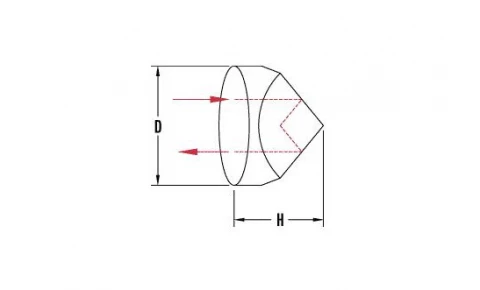Description
Corner Cube Retro-Reflectors are a specialized optical component designed to reflect light beams back to their source with minimal deviation. These devices operate on the principle of total internal reflection (TIR), ensuring that any light entering the effective aperture is accurately reflected by the three roof surfaces. The result is that the beam exits parallel to its original path, making these retro-reflectors highly reliable regardless of their orientation, as long as it falls within the acceptance angle limitations.
For scenarios where the acceptance angle for TIR is surpassed, or when maintaining clean reflecting surfaces is impractical, Corner Cube Retro-Reflectors can be enhanced with metal or dielectric coatings. These coatings ensure optimal performance even under challenging conditions, providing flexibility and adaptability for various applications. The precision and consistency of these reflectors make them an indispensable tool in any optical system requiring accurate light path control.
At Rocky Mountain Instrument Co., we pride ourselves on our collaborative approach to solving complex optical challenges. By engaging with our clients from the early stages of development, we facilitate the transition from prototype concepts to efficient, manufacturable solutions. This commitment to innovation and quality ensures that our Corner Cube Retro-Reflectors meet the highest standards of performance and reliability.
CaF2 Corner Cube Retro-Reflector Prism
Specifications
| Type And Material: | CaF2 |
|---|---|
| Mounting: | Unmounted |
| Dimensions: | Custom |
| Surface Figure: | Lambda/4 @ 633nm |
| Surface Quality: | 20-10 Scratch-Dig |
Features
- Total Internal Reflection (TIR): Corner Cube Retro-Reflectors operate on the principle of TIR, ensuring that a beam entering the aperture is reflected by the three roof surfaces and exits parallel to itself. This feature is independent of the orientation within acceptance angle limitations.
- Material Options: Available in high-quality materials such as BK7, UVFS, FS, and CaF2 to suit various application needs.
- Dimensional Tolerance: Precision manufacturing with a tolerance of +0.000", –0.010".
- Angular Deviation: Maintains an angular deviation of 180º for high accuracy.
- Bevels: Features a minimum safety bevel on all edges with an unbeveled apex for enhanced safety and performance.
- Clear Aperture: Exceeds the central 85% of the diameter, ensuring maximum efficiency.
- Coating Options: For applications exceeding the acceptance angle for TIR or where surfaces cannot be kept clean, metal or dielectric coatings can be applied to the reflecting surfaces.
Applications
- Laser Ranging and Alignment: Corner Cube Retro-Reflectors are used in laser systems for precise distance measurement and alignment due to their ability to reflect light back to its source.
- Optical Instrumentation: These retro-reflectors are integral in various optical devices, ensuring accurate light path alignment and enhancing measurement precision.
- Surveying and Geodesy: In surveying, corner cube retro-reflectors are used for accurate geodetic measurements, helping in mapping and construction projects.
- Robotics and Automation: Retro-reflectors are used in robotics for navigation and positioning systems, allowing robots to determine their location and orientation accurately.
- Military and Aerospace: These reflectors are used in targeting and tracking systems, providing reliable performance in various environmental conditions.
- Communication Systems: Corner cube retro-reflectors are utilized in free-space optical communication systems to enhance signal return and improve communication reliability.
- Safety and Traffic Control: Used in road signs and vehicle reflectors, they enhance visibility and safety by reflecting light back towards the source.
Frequently Asked Questions
What are the standard specifications for a CaF2 Corner Cube Retro-Reflector Prism?
Can a metal or dielectric coating be applied to the reflecting surfaces of a Corner Cube Retro-Reflector?
How does a Corner Cube Retro-Reflector work?
What is a CaF2 Corner Cube Retro-Reflector Prism?
What is the acceptance angle for TIR?
Similar Products
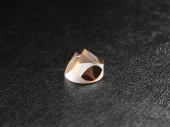
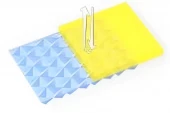
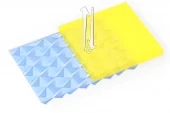
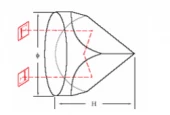
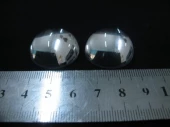
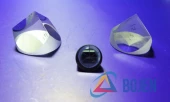
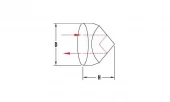
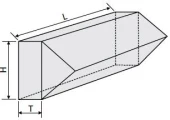
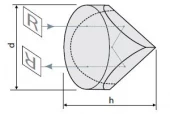
Your inquiry has been received.
Create an account by adding a password
Why create an account?
- Auto-complete inquiry forms
- View and manage all your past messages
- Save products to your favorites
- Close your account anytime — no hassle
